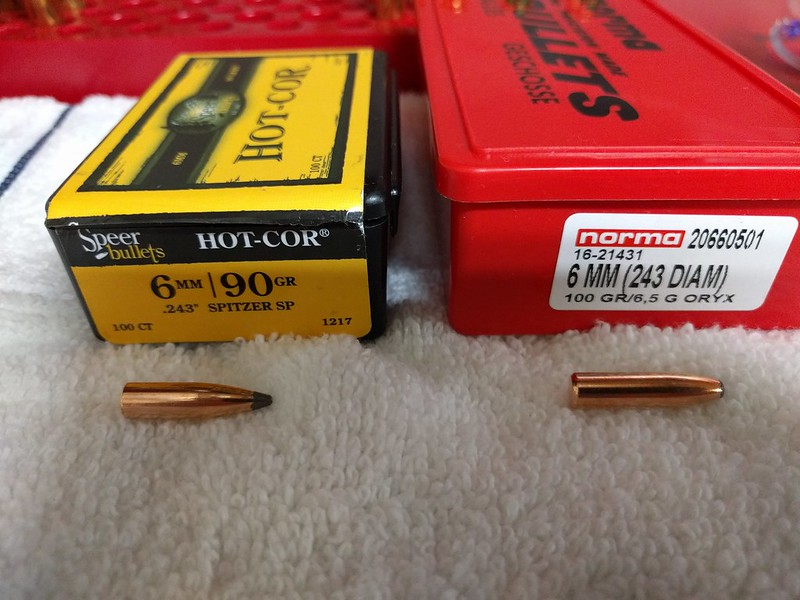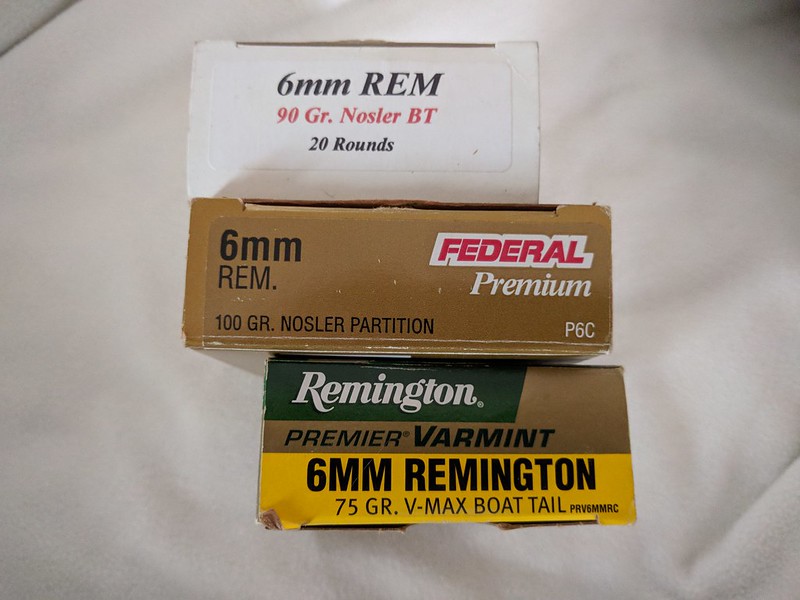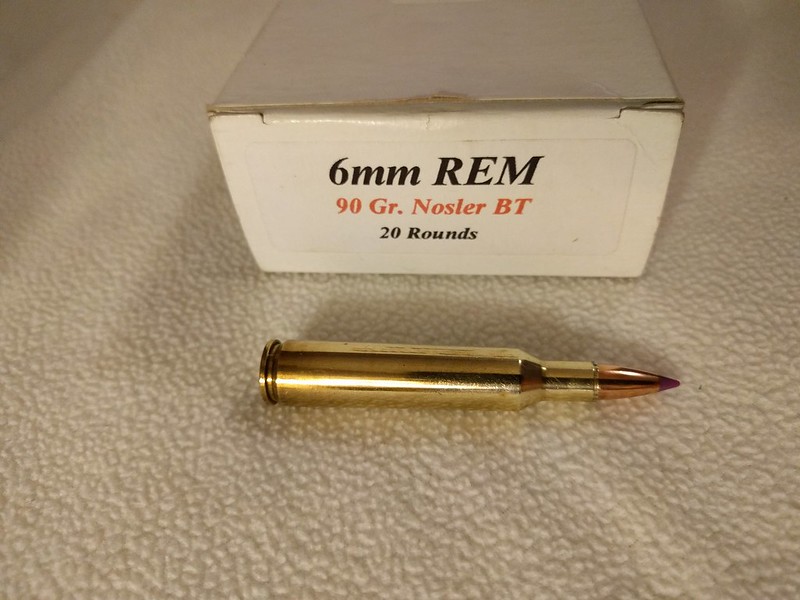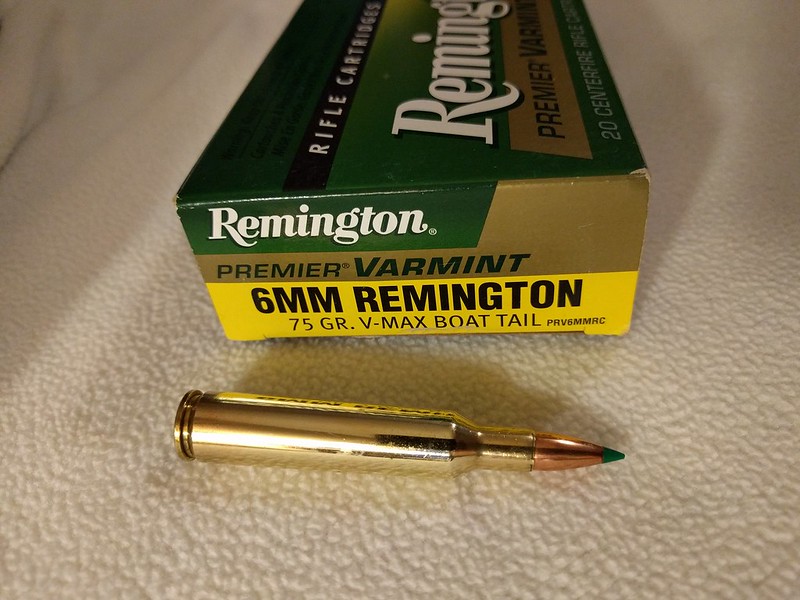EDIT: Made changes to comply with posting policy
In my previous post I queried about the possibility of loads for a 95 grain bullet. I’ve got an old Remington 722A from 1955 chambered in .244 (6mm Rem) with the earlier 1:12” twist.
Since then some clues have emerged that not only could a 95 grain bullet be used, but in fact a 100 grain bullet. Let’s review:
This suggests that the bullet grain limits for this particular rifle lay somewhere north of 90 and possibly has high as 100 depending on bullet configuration (notably length).
To start with I applied the Miller Twist Rule Formula. Specifically I solved for 's' or 'Stability Factor' as can be seen here https://en.wikipedia.org/wiki/Miller_twist_rule.
Likewise the online Berger Twist Rate Calculator may be handy for you and refers to the same calculation as 'SG'. However it's a bit clumsy for crunching larger data sets. So I created a spreadsheet using the formula and achieved essentially the same results.
The Speer 90 grain produced a stability factor of 1.27. The Berger online calculator corroborated my calculation.
For comparison sake, the Federal Premier that I had tried with Nosler Partition 100 grain only had a factor of 1.06 which was decidedly NOT stable in theory or practice!
With a spreadsheet created it became relatively easy to load in tabular data for a variety of 90 to 100 grain bullets. Using the 1.27 factor from a known stable bullet (and 1.06 being very unstable) - a few interesting observations stood out…
Most of the 95 and 100 grain bullets produced SG calculations well below my known to function 1.27 baseline - down closer to 1.06 or so - not particularly confidence inspiring. But a couple bullets did stand out.
The discontinued Hornady Round Nose #2455 in 6mm calculated to be 1.36 - suggesting it might be MORE stable than the proven Speer Hot Cor #1217 90 gr. But unfortunately it’s no longer on the market.
And finally the bullet that was the most interesting was the Norma Oryx #20660501 6mm 100 gr bullet. It calculated to be 1.24 - tantalizingly close to my proven 90 grain Speer load! I would describe these as somewhere between a round nose and a point with a flat base and subtle chamfer (see image below). As luck would have it - a major online retailer had the Normas on sale and so I picked up a box. By the time I’d worked up to 35 grains of IMR4064 powder, they grouped very well at both 100 and 200 and I could use the same zero on my scope as with my Speer Hot Cors. I left it at that.

So, yes, the slow 1:12” twist of my venerable 1955 722A .244 can indeed effectively shoot a 100 grain bullet (if chosen carefully) just like it’s modern 6mm Rem and .243 Win cousins!
What next? I may experiment with 95+ grain boat tails with polymer tips. I’m thinking the polymer tips don’t ‘count as much’ against overall length due to the lack of relative mass. And I may also work up a varmint load and perhaps even a target load. All part of the hobby.
In my previous post I queried about the possibility of loads for a 95 grain bullet. I’ve got an old Remington 722A from 1955 chambered in .244 (6mm Rem) with the earlier 1:12” twist.
Since then some clues have emerged that not only could a 95 grain bullet be used, but in fact a 100 grain bullet. Let’s review:
- The original Remington #1244 90 grain factory ammo is described as pointed, soft point, flat based and it certainly shot accurately.
- The Speer #1217 Hot Cor 90 grain bullets I’ve handloaded is, in my experience, shooting very accurately. I would describe the bullet as highly similar to the original Remington in outside appearance.
- Nosler 90 grain purple tipped bullets out of a generic white box, bought as ‘reloaded’ ammo from a gun show were also found to be accurate. What’s interesting about this bullet is it’s a boat tail and thus longer than the flat based fare tried earlier.
- Finally a box of Federal Premium Nosler Partition 100 grain factory ammo would NOT stabilize. (Correction - while not a boat tail - it's a fairly long bullet configuration)
This suggests that the bullet grain limits for this particular rifle lay somewhere north of 90 and possibly has high as 100 depending on bullet configuration (notably length).
To start with I applied the Miller Twist Rule Formula. Specifically I solved for 's' or 'Stability Factor' as can be seen here https://en.wikipedia.org/wiki/Miller_twist_rule.
Likewise the online Berger Twist Rate Calculator may be handy for you and refers to the same calculation as 'SG'. However it's a bit clumsy for crunching larger data sets. So I created a spreadsheet using the formula and achieved essentially the same results.
The Speer 90 grain produced a stability factor of 1.27. The Berger online calculator corroborated my calculation.
For comparison sake, the Federal Premier that I had tried with Nosler Partition 100 grain only had a factor of 1.06 which was decidedly NOT stable in theory or practice!
With a spreadsheet created it became relatively easy to load in tabular data for a variety of 90 to 100 grain bullets. Using the 1.27 factor from a known stable bullet (and 1.06 being very unstable) - a few interesting observations stood out…
Most of the 95 and 100 grain bullets produced SG calculations well below my known to function 1.27 baseline - down closer to 1.06 or so - not particularly confidence inspiring. But a couple bullets did stand out.
The discontinued Hornady Round Nose #2455 in 6mm calculated to be 1.36 - suggesting it might be MORE stable than the proven Speer Hot Cor #1217 90 gr. But unfortunately it’s no longer on the market.
And finally the bullet that was the most interesting was the Norma Oryx #20660501 6mm 100 gr bullet. It calculated to be 1.24 - tantalizingly close to my proven 90 grain Speer load! I would describe these as somewhere between a round nose and a point with a flat base and subtle chamfer (see image below). As luck would have it - a major online retailer had the Normas on sale and so I picked up a box. By the time I’d worked up to 35 grains of IMR4064 powder, they grouped very well at both 100 and 200 and I could use the same zero on my scope as with my Speer Hot Cors. I left it at that.

So, yes, the slow 1:12” twist of my venerable 1955 722A .244 can indeed effectively shoot a 100 grain bullet (if chosen carefully) just like it’s modern 6mm Rem and .243 Win cousins!
What next? I may experiment with 95+ grain boat tails with polymer tips. I’m thinking the polymer tips don’t ‘count as much’ against overall length due to the lack of relative mass. And I may also work up a varmint load and perhaps even a target load. All part of the hobby.
Last edited:





